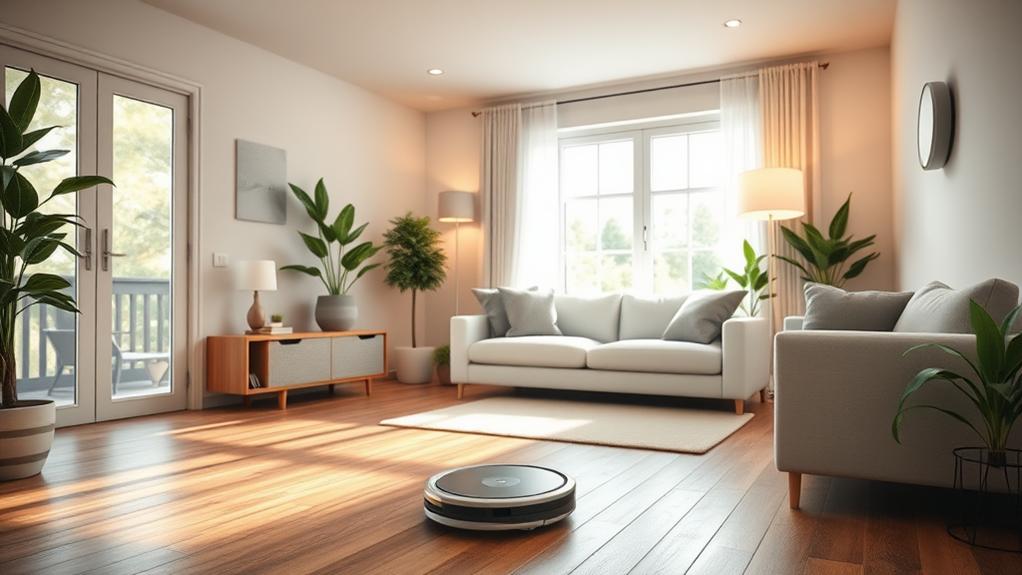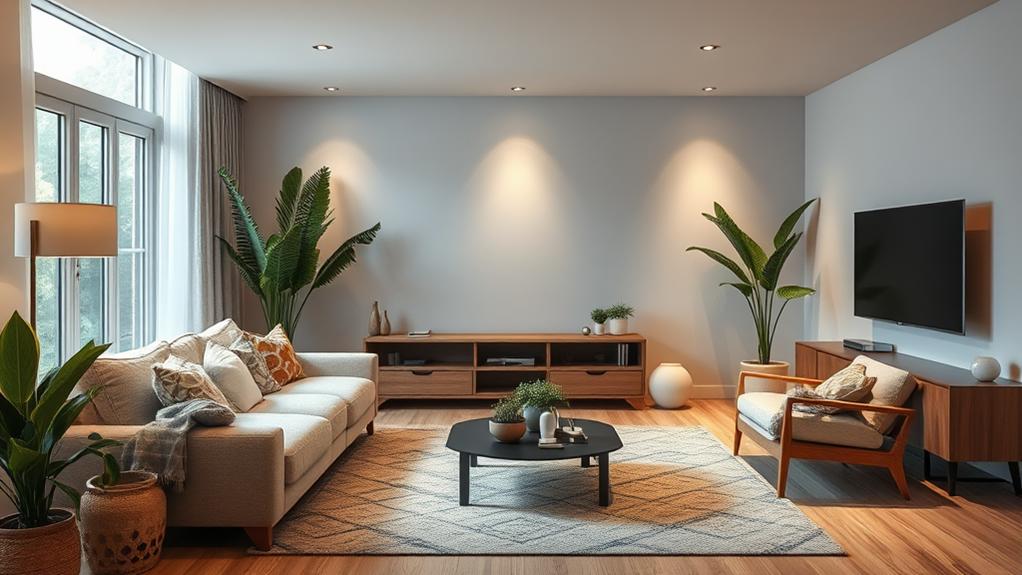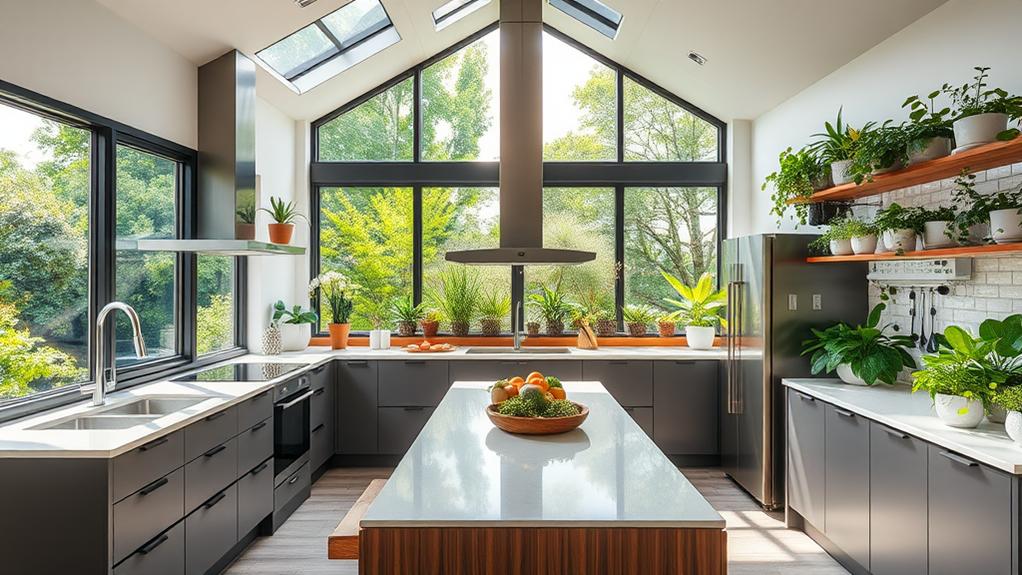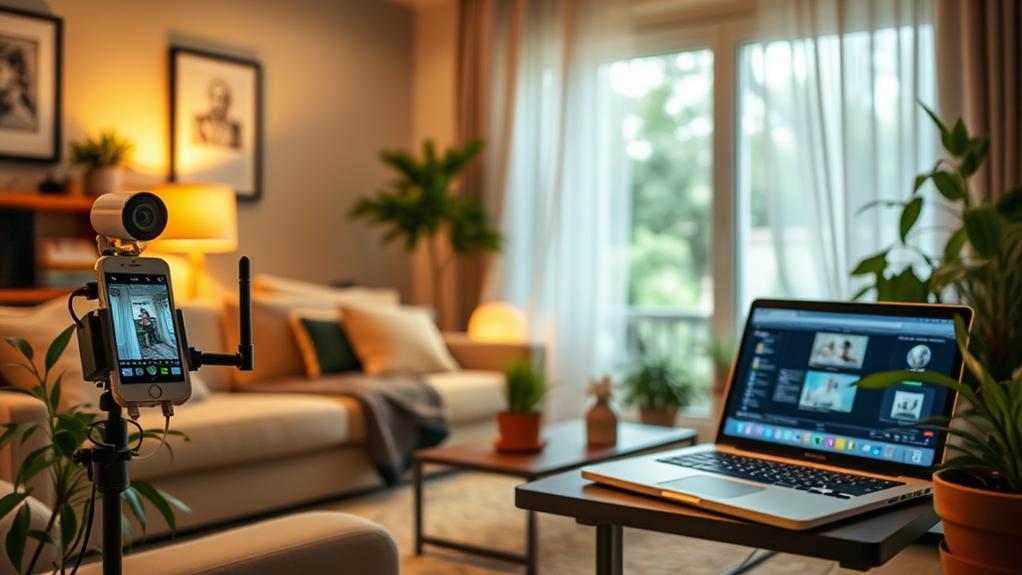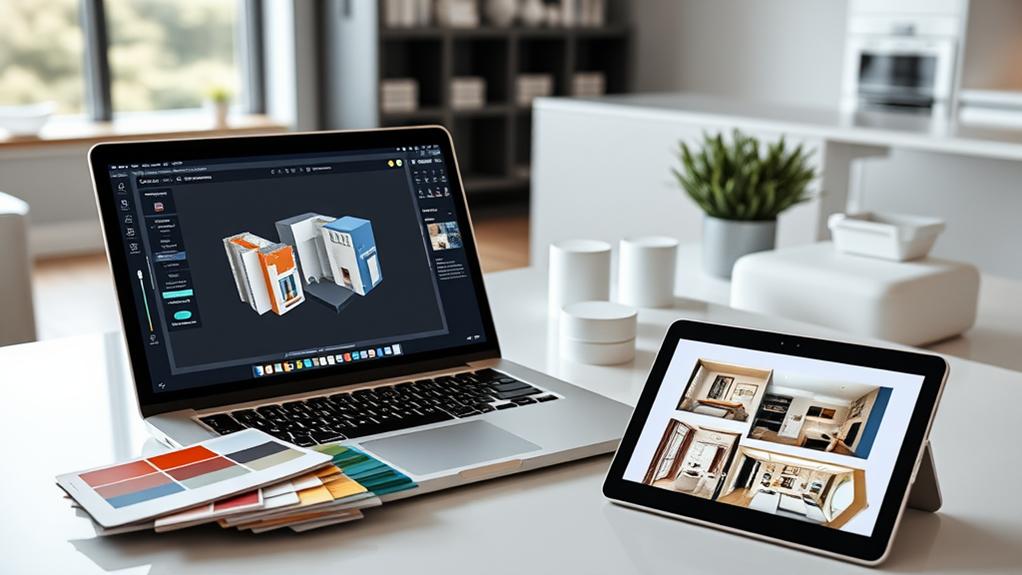Imagine you come home after a long day, and your lights automatically adjust to your preferred brightness while your thermostat has already set the perfect temperature. By embracing DIY automation, you can transform your home into a responsive environment that caters to your needs. But how do you identify which tasks to automate and which devices are best suited for your lifestyle? Understanding the essentials can set you on a path to a more streamlined and efficient home.
Understanding DIY Automation Benefits
When you immerse yourself in DIY home automation, you access a world of benefits that can transform your living space. First and foremost, you'll enjoy increased convenience. Imagine controlling your lights, thermostat, and security from your smartphone or through voice commands. This level of control not only simplifies your daily routine but also enhances your comfort.
Moreover, DIY home automation can lead to significant energy savings. By programming your devices to operate efficiently—like adjusting the thermostat when you're away or using smart bulbs that dim—you'll reduce waste and lower your utility bills. You'll also contribute positively to the environment by minimizing your energy consumption.
Safety is another essential benefit. With smart security systems, you can monitor your home in real-time, receive alerts, and even remotely lock doors. This peace of mind is invaluable, especially when you're away.
Lastly, personalizing your automation system allows you to tailor it to your lifestyle. Whether it's setting mood lighting for movie nights or scheduling appliances, your home becomes a reflection of your preferences.
Embracing DIY home automation means you're not just upgrading your space, but also enhancing your quality of life.
Assessing Your Home's Needs
Evaluating your home's needs is essential before diving into DIY home automation. Start by identifying the tasks you want to simplify or enhance. Think about the daily routines that are time-consuming or inconvenient. Are there specific areas in your home where automation could provide greater comfort or security?
For instance, consider whether you want to manage lighting, heating, or security systems more efficiently.
Next, assess your current technology. Take stock of devices you already own and their compatibility with potential automation systems. This will help you determine whether you can integrate new devices with what you already have or if you'll need to replace them entirely.
Additionally, consider the layout of your home. Are there particular rooms that would benefit from automation more than others?
Focusing on high-traffic areas or spaces where you spend the most time can yield significant improvements.
Choosing the Right Devices
Choosing the right devices for your home automation project can greatly impact the overall efficiency and satisfaction of your setup.
With so many options available, it can feel overwhelming, but focusing on your specific needs can help narrow down your choices. Here are three key factors to contemplate when selecting devices:
1. Compatibility: Verify the devices you choose work well together and with your existing systems. Some devices may only support specific platforms, so check for compatibility with your smart hub or voice assistant.
2. Functionality: Think about what you want each device to accomplish. Whether it's lighting control, security features, or smart thermostats, confirm the devices align with your goals.
Prioritize devices that offer multi-functionality to maximize efficiency.
3. Ease of Use: Choose devices that are user-friendly and easy to install. A complicated setup can frustrate you and detract from the enjoyment of your automation project.
Look for devices with intuitive apps or interfaces.
Planning Your Automation Layout
As you immerse yourself in planning your automation layout, it's vital to visualize how each device will interact within your space. Start by mapping out your home's layout. Identify key areas where automation will enhance convenience, like lighting, security, and climate control.
Next, consider the placement of devices. For instance, smart speakers should be centrally located for ideal voice command reception. Make sure that smart bulbs are accessible and positioned to provide the best lighting effect.
Think about how these devices will communicate with each other; a solid Wi-Fi network is necessary for smooth operation.
Don't forget about user experience. Sketch out how you'll interact with the system. Will you use a central app or individual device controls? Plan your automation sequences, like setting up routines that activate multiple devices at once, such as dimming lights and locking doors when you leave.
Lastly, take into account future expansion. Design your layout with flexibility, allowing for additional devices or features as technology evolves.
Easy Installation Techniques
Often, homeowners find installation to be one of the most intimidating aspects of DIY home automation.
However, with a few easy techniques, you can streamline the process and make your installation a breeze.
Here are three simple tips to help you get started:
- Read the Manual: Don't skip this step! Each device comes with its own set of instructions. Familiarize yourself with the guidelines to avoid common pitfalls.
- Use Pre-Configured Settings: Many smart devices come with default settings that make installation quicker. Take advantage of these settings to save time and effort. You can always customize later!
- Leverage Online Resources: YouTube and forums are treasure troves of information. Search for installation videos or guides specific to your device. Seeing someone else do it can clarify complex steps and boost your confidence.
Integrating Smart Home Ecosystems
Integrating smart home ecosystems can elevate your home automation experience greatly. By connecting various devices, you create a cohesive system that communicates seamlessly, enhancing convenience and functionality.
Start by choosing a central hub, like Google Home or Amazon Echo, which acts as the brain of your ecosystem.
Next, select devices that are compatible with your chosen hub, such as smart lights, thermostats, and security cameras. Make sure they support standard protocols like Zigbee or Z-Wave for easier integration.
Once you've got your devices, set them up through the hub's app. You'll be amazed at how simple it's to control everything from one interface.
Don't forget about voice commands! Using your hub, you can issue commands verbally, making it even more convenient to manage your home. You can also create routines that automate tasks, like dimming lights or adjusting the thermostat at specific times.
Lastly, keep security in mind. Regularly update your devices and use strong passwords to protect your network.
Optimizing Energy Efficiency
When it comes to optimizing energy efficiency in your smart home, every small adjustment can lead to significant savings over time.
By implementing a few smart solutions, you can reduce your energy consumption and lower your bills without sacrificing comfort.
Here are three effective strategies to reflect upon:
1. Smart Thermostats: Install a smart thermostat that learns your schedule and adjusts temperatures accordingly.
It'll guarantee your heating and cooling systems operate only when necessary, saving you money on energy costs.
2. Energy-Efficient Lighting: Switch to smart LED bulbs that can be programmed to turn off when you're not home or dimmed based on the time of day.
This not only reduces energy use but also extends the life of your bulbs.
3. Smart Power Strips: Use smart power strips to eliminate phantom power draw from devices that remain plugged in.
These strips can automatically switch off power to devices when they're not in use, helping you avoid wasted energy.
Enhancing Security Features
As you optimize your home's energy efficiency, consider how enhancing security features can further protect your investment. Smart security devices are essential for safeguarding your home, and fortunately, DIY automation makes it easier than ever.
Start with smart locks. You can replace traditional locks with smart versions that allow keyless entry, enabling you to manage access remotely. If you're expecting guests, you can grant them temporary access right from your smartphone.
Next, think about smart cameras. Installing outdoor cameras lets you monitor your property in real-time, and many models offer motion detection alerts. This means you'll receive notifications whenever someone approaches your home, adding an extra layer of security.
Don't overlook smart lighting, either. Setting up motion-activated outdoor lights can deter potential intruders. You can also program indoor lights to mimic your daily routine, making it look like someone's always home.
Lastly, consider integrating your security system with a smart home hub. This allows you to control all your devices from one central point, ensuring you're always in the know.
Maintaining Your Automated System
To guarantee your automated system continues to function smoothly, regular maintenance is essential. By taking a proactive approach, you'll make certain everything runs efficiently and minimizes unexpected issues.
Here are three key maintenance tasks you should perform:
- Update Software Regularly: Just like your smartphone or computer, your automated system needs updates to fix bugs and enhance functionality. Check for updates frequently and install them to keep your system at its best.
- Inspect Hardware Components: Periodically check the physical components such as sensors, cameras, and hubs. Look for signs of wear or damage, and replace any faulty parts to prevent malfunctions.
- Test System Functionality: Regularly assess the performance of your automated system. Run tests on specific functions like lighting controls, security alerts, and temperature settings. This way, you can spot issues before they become bigger problems.
Conclusion
By embracing DIY automation, you're not just installing devices; you're weaving a tapestry of convenience and security that transforms your home into a sanctuary. Each smart gadget acts like a thread, stitching together a seamless experience that adapts to your needs. As you navigate this journey, remember that the true essence of automation lies in the harmony it brings to your daily life. So, take the leap and let your home evolve into a smart haven that reflects your unique lifestyle.







